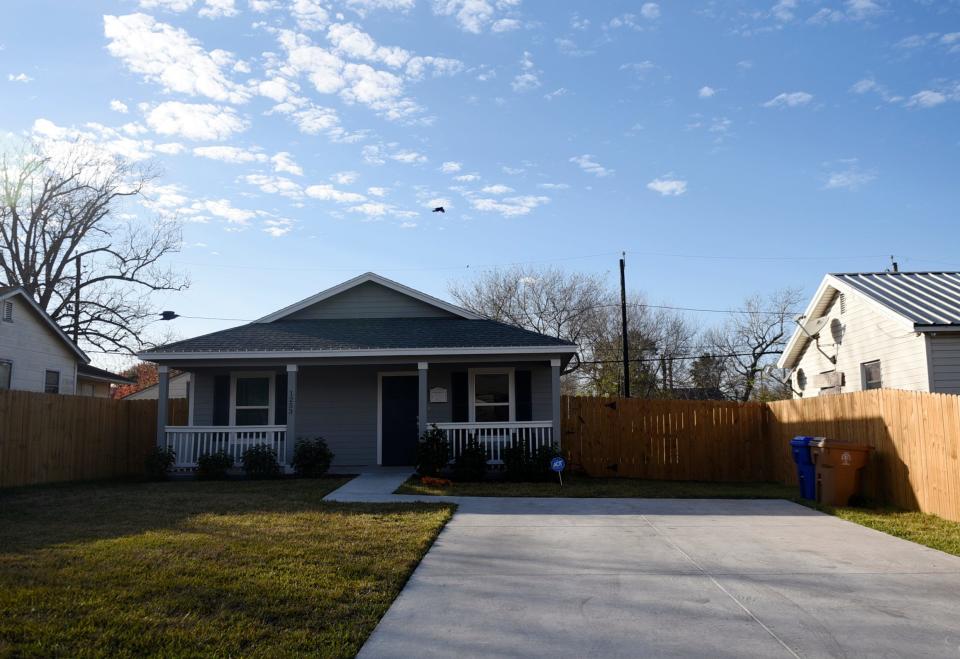Here's why infill housing may see a boost
A growing trend in redeveloping some of Corpus Christi’s oldest neighborhoods may pick up speed as restrictions ease and housing price eligibility bumps up.
Infill housing is a method of neighborhood revitalization that involves constructing new homes on empty or abandoned lots within established subdivisions, typically in older areas of the city where utilities and other infrastructure are already in place.
Although the city has seen an increasing number of infill housing developments, newly-loosened regulations on zoning and a boost in allowed house costs may create more opportunities for infill housing projects, according to city officials.
The existing program wasn’t working, with regulatory criteria that was onerous and excluded too many projects, said City Councilman Mike Pusley.
The revisions adopted by the council will make it usable again, he added.
““(It gives) the ability to build new homes in older or very mature subdivisions across the city – wherever they may be – and breathe new life into these subdivisions,” Pusley said.

The revamped program – endorsed by the City Council in late October– doesn’t limit fee waivers only to infill housing lots in federally-identified areas, but extends from those boundaries to all areas where single-family homes may be built, including those zoned as multifamily.
It also makes incentives available for higher-priced infill homes.
Instead of 80% of the area median income – a figure of about $213,300 – it raises the cost ceiling for program eligibility to 95% of area median income at $253,000, city documents show.
The fee waivers are intended to offset the cost of construction – those aren’t changing from the earlier program. The idea is to increase availability of incentives for more construction.
At max, that’s a $7,000 reimbursement but on average it's about $3,500, said Dan McGinn, director of the city’s planning and environmental department.
Applicable waivers include building permit, tap water, gas, wastewater and municipal solid waste fees, according to city records.
The cost of the waivers is covered by $100,000 earmarked in the city’s general fund, instead of the responsibility of the developer, if approved by the program.
Last year, only about half of the money was used, McGinn said.
Using the allocation in total would amount to incentivizing roughly 30 to 40 homes, he said.
The homes are intended to be “constructed at a relatively affordable level,” McGinn said, noting that greenfield development – such as the city’s Southside and London area – are seeing homes on the lower purchase price end of about $260,000 to $270,000 but “most well over that.”
Thanksgiving Homes – an affiliate of the Corpus Christi Housing Authority – has been one of the most active participants in infill housing in recent years.
The nonprofit has so far developed about 110 homes, according to officials.
Expanding the criteria will likely double the number of properties that would qualify for incentives, said Gary Allsup, CEO of Thanksgiving homes and CEO of the housing authority.
“A much more broad definition of what would be eligible is going to make a huge difference for us,” he said.
Houses developed by Thanksgiving Homes are sold for the cost of construction, “not based on what we can sell them for,” Allsup said.
The purchase price on the most expensive three-bedroom house the nonprofit has sold is $189,000, he has said.
“If we can take a little bit more off the cost, then it’s going to directly impact the amount of money the homebuyer pays for it,” Allsup said.
More: Here are some plans for the former Lozano Elementary School property
More: Plans for the former Lamar Elementary School site may be changing. Here's why.
This article originally appeared on Corpus Christi Caller Times: Corpus Christi loosens infill housing rules for new developments

